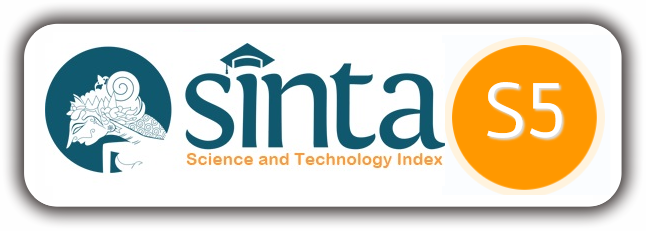Development of Computer Based Media for Learning to Fill in Export Notification and Notification of Import of Goods in the Department Ketatalaksanaan Pelayaran Niaga Program Diploma Pelayaran Universitas Hang Tuah Surabaya
DOI:
https://doi.org/10.30649/japk.v9i1.38Keywords:
computer based media, notification of export of goods, notification of import of goods, research and development, effectivenessAbstract
The learning of filling in export notification of goods (PEB) and notification of import of
goods (PIB) conducted in the department of Ketatalaksanaan Pelayaran Niaga (KPN) of Program
Diploma Pelayaran (PDP) of the Universitas Hang Tuah (UHT) Surabaya still uses lecture and
presentation methods using OHP (Over Head Projector) slides. OHP slide presentations have
weaknesses in the material, presentation display, user interaction, and program interactions. Therefore
it is necessary to develop computer-based media in order to improve the effectiveness of PEB and PIB
filling learning. The problem of the effectiveness of learning to fill PEB and PIB will be solved by
Research and Development method. The research steps include potential problems, needs analysis,
design, implementation, expert validation, product revision I, user trials, product revision II, and mass
publications. The test respondents consisted of 41 students of KPN semester VI and 4 lecturers of KPN
PDP UHT. Methods of data collection is done by documentation and questionnaire. The method used
to analyze the data is with quantitative descriptive analysis techniques in the form of scores and
percentages on a predetermined assessment scale. The results showed that computer-based media able
to improve the effectiveness of learning filling PEB and PIB. Based on the assessment of students and
lecturers, computer-based learning media charging PEB and PIB has the average percentage of
indicator value; content equal to 68,41% (effective), view equal to 68,66% (effective), user interaction
equal to 79,76% (very effective), and program interaction equal to 79,02% (very effective). The average of new learning performance or using the PEB and PIB charging tutorial program
(73.96%) is better than the old learning performance or without using the PEB and PIB charging
tutorial program (37.5%). The statistical test using the left side correlated t test shows t count -34.8354
falls on the area of acceptance Ha, so Ha accepted. The alternative hypothesis (Ha) states that the old
learning performance is smaller than the new learning performance.
References
Afriani. (2007). “Analisis Pemanfaatan Tutorial Online Mata Kuliah Writing 1”. Jurnal Pendidikan Terbuka dan Jarak Jauh, Volume 8, Nomor 1, Maret 2007, 15-23.
Arikunto, Suharsimi. (2010). Prosedur Penelitian : Suatu Pendekatan Praktik. Jakarta: Rineka Cipta.
Danfar. (2009). Definisi/Pengertian Efektifitas. Diakses dari https://dansite.wordpress.com/2009/03/28/pengertian-efektifitas/# tanggal 3 Januari 2016.
Direktorat Pembinaan Kursus dan Pelatihan. (2011). Standar Kompetensi Lulusan Ekspor Impor. Jakarta: Direktorat Jenderal Pendidikan Anak Usia Dini, Nonformal dan Informal, Kementerian Pendidikan Nasional.
Hamdani dan Pebriana Arimbhi. (2014). Manajemen Perdagangan Ekspor (Level Satu). Jakarta: Penerbit IN MEDIA.
Hamdani dan Pebriana Arimbhi. (2014). Manajemen Perdagangan Impor (Level Dua). Jakarta: Penerbit IN MEDIA.
Hannafin, M. J., Peck, L. L. (1988). The Design, Development and Evaluation of Instructional Software. New York: McMillan Publ., Co.
Heinich, R., et. al. (1996). Instructional Media and Technologies for Learning. New Jersey: Prentice Hall, Englewood Cliffs.
Kristiningrum. (2007). Pengembangan Multimedia Pembelajaran Interaktif dengan Macromedia Authorware 7.0 pada Materi Fisika Sekolah Menengah Atas (SMA) Pokok Bahasan Kinematika Gerak Lurus. Skripsi. Fakultas Matematika dan Ilmu Pengetahuan Alam, Universitas Negeri Semarang.
Maria Zulfiati, Heri. (2014). Pengaruh Pembelajaran IPS Berbasis ICT (Information and Communications Technology) Dengan Aplikasi Lectora Inspire Dalam Meningkatkan Hasil Belajar Mahasiswa. Jipsindo, No. 1, Volume 1, Maret 2014.
Pribadi, Benny Agus, dan Putri, Dewi Padmo. (2001). Ragam Media dalam Pembelajaran. Jakarta: PAU – PPAI, Universitas Terbuka.
Ramadhan, Akbar. (2014). Pengembangan Media Pembelajaran Menggunakan Multimedia Interaktif Lectora Inspire Pada Mata Pelajaran Teknik Elektronika di SMK Negeri 3 Jombang. Skripsi. Universitas Negeri Yogyakarta.
Sudarmaji, Andy. (2015). Pengembangan Media Pembelajaran Berbasis Aplikasi Lectora Inspire Untuk Mata Pelajaran Sistem AC di SMK Negeri 2 Klaten. Skripsi. Universitas Negeri Yogyakarta.
Sugiyono. (2012). Metode Penelitian Bisnis. Bandung: Penerbit ALFABETA.
Surjono, Herman Dwi. (1999). Pengembangan Program CAI Multimedia Untuk Pembelajaran Teori Elektronika. Fakultas Pendidikan Teknologi dan Kejuruan, Institut Keguruan dan Ilmu Pendidikan Yogyakarta.
Widuroyekti, Barokah. (2006). “Pendekatan Belajar Aktif dan Peningkatan Tanggung Jawab Mahasiswa dalam Proses Tutorial Tatap Muka”. Jurnal Pendidikan, Volume 7, Nomor 1, hlm. 55 – 65.
Downloads
Published
How to Cite
Issue
Section
License
Copyright (c) 2018 Ekka Pujo Ariesanto Akhmad

This work is licensed under a Creative Commons Attribution-ShareAlike 4.0 International License.











